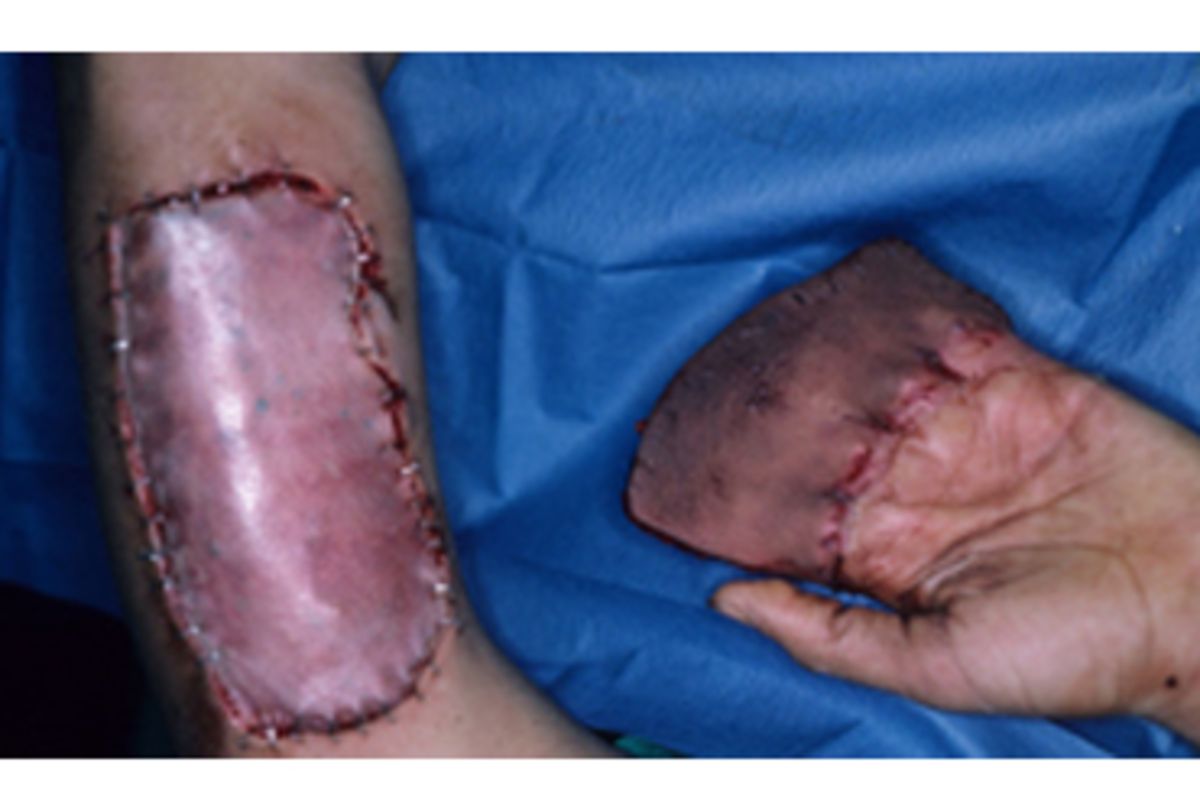
A skin graft is a piece of healthy skin removed from one area of your body to repair damaged or missing skin somewhere else on your body. This skin does not have its own source of blood flow. A skin flap is healthy
skin and tissue that is partly detached and moved to cover a nearby wound.
- A skin flap may contain skin and fat, or skin, fat, and muscle.
- Often, a skin flap is still attached to its original site at one end and remains connected to a blood vessel.
- Sometimes a flap is moved to a new site and the blood vessel is surgically reconnected. This is called a free flap.
The area from where skin is taken is called the donor site. After surgery, you will have two wounds, the graft or flap itself and the donor site.
Learning how to care for skin flaps and grafts can help them heal more quickly and reduce scarring.
ALTERNATIVE NAMES
Autograft – self-care; Skin transplant – self-care; Split-skin graft – self-care; Full thickness skin graft – self-care; Partial-dermal skin graft – self-care; FTSG – self-care; STSG – self-care; Local flaps –
self-care; Regional flaps – self-care; Distant flaps – self-care; Free flap – self-care; Skin autografting – self-care
WHY SKIN FLAP OR GRAFT SURGERY IS PERFORMED
Skin grafts are used to help more serious wounds heal, including:
- Wounds that are too big to heal on their own
- Burns
- Skin loss from a serious skin infection
- Surgery for skin cancer
- Venous ulcers, pressure ulcers, or diabetic ulcers that do not heal
- After mastectomy or amputation
Donor sites for grafts and flaps are chosen based on:
- How closely the skin matches the area of the wound
- How visible the scar will be from the donor site
- How close the donor site is to the wound
Often the donor site may be more painful after surgery than the wound due to newly exposed nerve endings.
You will need to care for both the flap or graft site as well as the donor site. When you come home after surgery, you will have a dressing on your wounds. The dressing does several things, including
- Protect your wound from germs and reduce the risk of infection
- Protect the area as it heals
- Soak up any fluids that leak from your wound
Often the donor site may be more painful after surgery than the wound due to newly exposed nerve endings.
To care for the graft or flap site:
- You may need to rest for several days after surgery as your wound heals.
- The type of dressing you have depends on the type of wound and where it is.
- Keep the dressing and area around it clean and free from dirt or sweat.
- Don’t let the dressing get wet.
- Do not touch the dressing. Leave it in place for as long as your doctor recommends (about 4 to 7 days).
- Take any medicines or pain relievers as directed.
- If possible, try to elevate the wound so it’s above your heart. This helps reduce swelling. You may need to do this while sitting or lying down. You can use pillows to prop up the area.
- If your doctor says it’s OK, you may use an ice pack on the bandage to help with swelling. Ask how often you should apply the ice pack. Be sure to keep the bandage dry.
- Avoid any movement that might stretch or injure the flap or graft. Avoid hitting or bumping the area.
- If you have a vacuum dressing, you may have a tube attached to the dressing. If the tube falls off, tell your doctor.
- You will probably see your doctor to have your dressing changed in 4 to 7 days. You may need to have the dressing to your flap or graft site changed by your doctor a couple times over 2 to 3 weeks.
- As the site heals, you may be able to care for it at home. Your doctor will show you how to care for your wound and apply dressings.
- The site may become itchy as it heals
